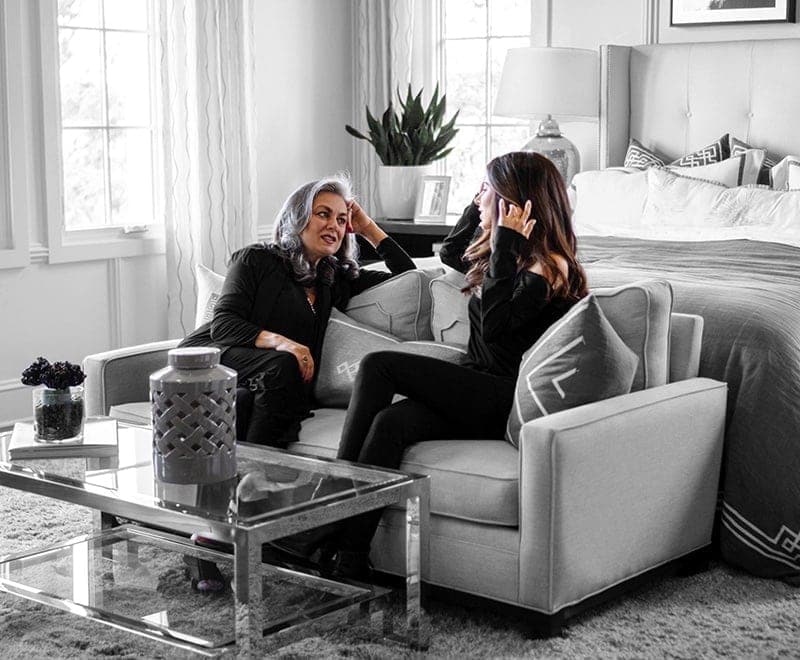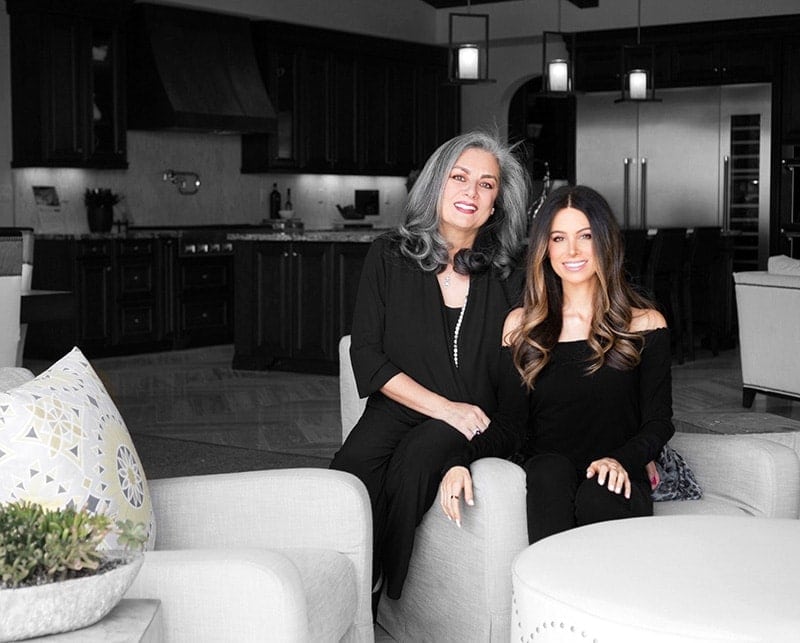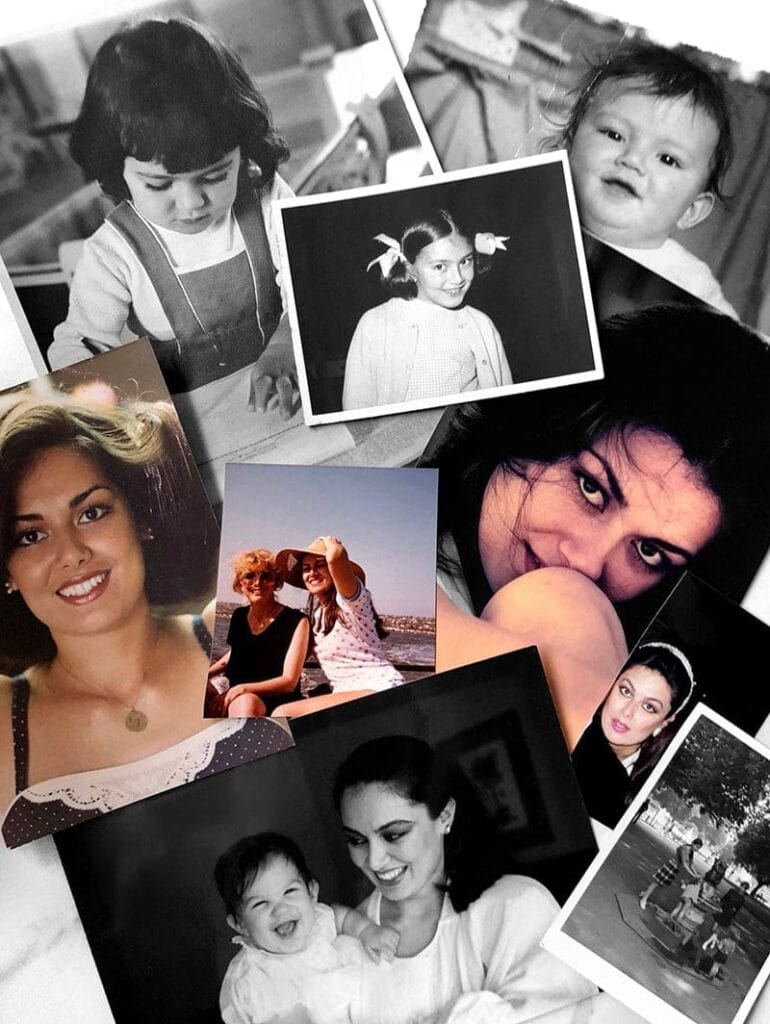Today is a very special day for me because I get to introduce to you my best friend, my greatest teacher, and the original White Horse warrior – my Mom.
Mom, take it away…
Hi Everyone. Thank you for supporting this blog, Natasha, and for creating this incredible community. I am honored to write for you today. My background is in clinical and industrial psychology. I have over 35 years of experience in clinical and organizational settings, but I am not here with any of that today.
Today, I’m not coming to you as a professional, not even as Natasha’s Mom. I am not here as a wife, an ex-girlfriend, an ex-wife, a student, a teacher, a friend, a partner, a mother, a sister, or a daughter. I’m coming to you as the one thing that, for so many years, I judged, criticized, sabotaged, and tried to conceal—myself.
I am what I like to call a storyologist and a professional lemonade maker. If you bring me your lemons, I can help you turn your pain, challenges, and obstacles into wisdom and positive results.
I love helping people understand their own stories, deactivate their triggers, and enhance the quality of their personal and professional lives.
Natasha has written posts on Why You Need To Stay On The White Horse and What To Do When You Fall Off. So, I thought, what better subject for my first guest post than What To Do When You Don’t Want To Stay On Your White Horse?
I’m happy that this metaphor I created for Natasha and have used with so many of my clients over the years is popular here on the blog.

Before I get into that, I’d like to tell you where my white horse resides. Even Natasha doesn’t know this story.
Growing up in Europe, I probably went to every art and natural history museum in the major cities of the countries that I lived in and visited with my parents. They all looked very similar. Gray and foreboding structures with numerous steps leading to heavy doors that open into a foyer.
To the left, a gift shop and to the right, the information counter. Once the ticket was purchased, my father and I would enter the main hall of the museum. We were usually greeted by an enormous prehistoric skeleton of a dinosaur, either real or fabricated, letting us know that, big or small, all things will come to an end. The decision then had to be made as to which wing, hall, or sections were to be visited, given our time limitations. My father and I would stand and marvel at Mother Nature’s handiwork captured in glass, metal frames, or frozen in time by a taxidermist.
As I grew older and my father left, the visits to the museums stopped.
As a mental health provider, I have made a career of meeting with people and securing their trust enough to get an invitation into their personal museums where they keep their untold stories, secrets, fears, and true feelings. However, my training dictated that self-disclosure be kept to a minimum and given only when necessary in the interest of my client.
As time passed and I evolved as a person and a provider, I realized that I had indeed built and housed a Museum of Me, just as the people I had been serving created. This Museum of Me was old and gray, with numerous steps leading up to a set of doors that were boarded up. The ticket counter was on the outside with no attendant. The sign read: “Do not enter. If you must, do so at your own risk.”
Occasionally, I would have to enter this museum to store yet another experience in one of its sections. Upon entering, just like the museums of natural history that I visited as a child, I was greeted with a colossal skeletal structure. This was not a prehistoric animal but rather a human skeleton, bending over slightly with a judgmental finger pointing toward me in admonishment and criticism. Each time, the face could be different, but the finger was always pointing at me with disappointment, letting me know I wasn’t good enough.
To the left of this rotunda was the Hall of Shame. Big, disintegrating red velvet ropes kept visitors at bay, but I knew what was stored in that part of my museum.
Things like my name, heritage, rejection, humiliation, and parts of my history punctuated a lifetime of wanting to be perfect and approved of. Both my mother and the schools I attended in England demanded excellence and perfection just to be accepted as an average child. At school, an A+ could at least please a teacher. My classmates were another story.
My mother thrived on being perfect and demanding perfection in everything and everyone around her. One of my favorite activities as a ten-year-old child was to wait until she and my father took their afternoon nap to go into the formal parlor, where she kept her most favorite and precious silk Persian rug. Beautifully and delicately woven, this carpet was so special to her that no one was allowed to walk on it. We had to walk around it to get from one room to the other.
What you may not know is when a Persian rug is being woven, several women sit next to each other at the loom. To expedite the process, instead of having each person read a pattern and then tie the knots with wool or silk, a narrator reads the pattern aloud to a melody. As this person sings the pattern, each person at the loom ties the corresponding knot. Traditionally, the narrator is supposed to introduce an error in the pattern, so that each and every Persian rug, with its glorious design and colors, has an imperfection. This is done out of respect for their belief in the Almighty because only God is perfect and can create perfection. For humans and Persian rug makers to create a perfect carpet would be blasphemous.
So, on my belly, holding a yardstick that my mother kept in her sewing room, I would move this stick millimeter by millimeter across her most expensive Persian silk rug to find the imperfection. Maybe then, I could go to her and point out the flaw in her most beloved possession. I could then ask her how she could love an object that was clearly defective with no expectation and yet, have my faults stop her from expressing her love, approval, and acceptance openly to me.
I never did find the imperfection in the silk rug. I even asked my father to take me to see how Persian rugs were made and to check out the story of the deliberate imperfections sung into every carpet. The story was true. There is an imperfection in every rug and those who appreciate Persian carpets either don’t know about this or they accept it as part of the weaving process.
So, in my Hall of Shame are all of my imperfections – which were noticed, mentioned, and not accepted by my mother and others that I attracted as I was growing up.
The adjacent hall in the Museum of Me is the Hall of Blame. You can’t really have one without the other. To be blamed is to be seen as doing something wrong. To be shamed is to be wrong. I did wrong, and more importantly, I was wrong.
However, upstairs in the Museum of Me is an entire Ward of Dreams. This is where intuition, inner wisdom, and the higher self reside.
Tucked away under a pile of ancient manuscripts of life lessons learned is where my White Horse rides. Waiting for me to grow up, to claim it, to climb on top and carry me through the many trials and tribulations of my relationships and life.
There is a small but interesting corner in the Museum of Me that houses musical instruments – songs, melodies, and sounds that can act as time machines transporting me to different parts of my life.
On a shelf, high above arms-length, sits a red accordion.
Mr. K was hired by my parents to teach me how to play my first musical instrument, an accordion. I met him in the first weeks of summer when I was six years old. He walked up the stairs to our house and entered the library, holding two big cases that looked like suitcases. My mother introduced us and left to get him a cool beverage.
He opened the smaller case and brought out the shiniest red accordion I had ever seen. He opened the other case and removed his opulent white accordion. He explained to me how an accordion operated like a person’s lungs and how the player’s job was to breathe a song in and out of this instrument. My name in my native language means “a song or a melody.” Mr. K, as he strapped the red accordion onto my small body, said: “All you have to do is to figure out the song in your heart and let the accordion play it.” Leaving him to move to England was one of the greatest tragedies of my childhood. At the time, I didn’t know nor understand why it was so devastating.
I had not even stepped into this section of The Museum Of Me for years when I was diagnosed with breast cancer on New Year’s Eve, 2016. Sitting in the waiting room in the Radiation Oncology Department, in February of the same year, I received a text that would throw me back into the music section of the Museum of Me.
My father had been invited to visit his former students and colleagues in Washington, DC. Although I understood why he had to leave, I still felt abandoned. I wanted him to want to accompany me to my radiation sessions as I had taken him to his.
I knew they were having a reception and his host had been texting me to apprise me of his well-being. The text was from his hostess, the wife of a former student, now a grandmother.
I was called to receive my treatment before I had a chance to open the text. After my treatment, I sat in the car and opened the text. The hostess told me that my father was well and she had a surprise for me, which she was sending as a video clip.
Not knowing what to expect, I pressed play. I was greeted by a gray old man embracing a white accordion, calling me by my first name and asking me if I remembered the song he was about to play. It was Mr. K.
Tears would not allow me to focus on what I was seeing. In an instant, I was transported to that section in my museum, where I kept that red accordion on an unreachable shelf. What was within reach was the piano and the critical piano teacher who echoed my mother’s dissatisfaction with me. A simple video, sent via text, took that red accordion and placed it back in my lap.
Over four decades ago, I met with Mr. K one year per week. That’s right, every hour with him felt like a wonderful year. You see, in a world and at a time where and when I was wrong, imperfect, short, and inept, once a week for a man with the kindest eyes, I was right, perfect, tall, and talented.
Even when I made a mistake in playing the piece we were working on, he would listen and then play the piece correctly, asking me which version I thought sounded best. Here he was again, at a time in my life when I felt imperfect, wrong, inept, and ridden with cancer. He was playing an old song and, in essence, inviting me to rediscover what was whole, right, and good about me again.
As we grow up, we build and expand the Museum of Me – storing memories and artifacts that are both positive and negative. We display some of the positive ones in our daily lives and on social media such as diplomas, degrees, vacations, accomplishments, and wedding bands. I would hide and disguise the negative with shame and blame.
Cancer and aging have forced me to enter my museum to remodel and reopen it as an exhibition hall. A place to share with others with pride in having survived my life and myself.
Now, I understand that true healing and self-disclosure are nothing more than sharing a part of the museum with someone who genuinely allows you to peek into theirs. In doing so, the lines between the teacher and the student, the professional and the client, parent and child, spouses and partners blur as one needs the other to live, learn, and, in some cases, move on.
You need to open the doors to your museum to see where your White Horse resides.

What to do when you don’t want to stay on your White Horse…
Whenever I’ve gone through a breakup – whether it be in business, with a friend, in marriage, or in romantic relationships – it’s very easy to get stuck in a vicious cycle of “rehashing the past or rehearsing the future.” This is done either in my head or with others.
This constant toggling between reviewing the past and anticipating the future prevents you from being present in your own life and from responding appropriately. We continuously rehash the past and review the future by thinking, “What if he/she falls in love?” “What if he/she does/doesn’t text or call or blocks me on his/her social media?”
We look for validation from any source that will give us the opportunity to rehash and rehearse until we exhaust ourselves and everyone around us.
We know we want oranges, so we go shopping for an orange tree. Unfortunately, we settle for any tree with little round baby green fruits on it, even if the tag says “green apple tree.” The tag may very well say “orange tree,” but we know that it doesn’t resemble an orange tree whatsoever.
We invest our time and nurture the tree with love and energy. We water it with tears, trying to get the tree to produce oranges, and we refuse to accept that apple trees don’t give oranges.
We continue to feed and water the tree with more of our time, love, and resources, hoping that with enough effort, the green fruit will turn into an orange. When the apple tree produces round fruit, we can stay in denial, ignore the signs, and ask why it won’t give us oranges after everything that we have done for it. Eventually, we either break up or break down.
This is why we rehash the past—all the effort, pain, arguments, and drama of cultivating the tree. We rehearse the future when we don’t get the fruit—even when we know it was never an orange tree.
We can stay in this time zone for very long periods of time.
Getting on the White Horse enables you to get above all the BS. It allows you to reevaluate your relationship, examine your part in what took place, and choose how you are going to respond to the situation instead of bouncing from one reaction or relationship to another.
However, it can be very lonely on the White Horse. After all, there’s only room for one.
So, if you’re tired of riding the White Horse and want to get off, here are some things to consider.
- Recognize that although staying on your White Horse can be lonely, you are never alone when you are riding along with other warriors and are part of a cavalry, like you are here on this blog.
- You CAN stop. You should stop. You can stop by sharing your story to teach, help, and learn from other riders as you do here with Natasha and each other.
- You can rehash and even rehearse, but don’t react to the perpetrator and re-traumatize yourself.
- Focus on understanding that you are triggered instead of acting on those triggers at the expense of your dignity.
- Once you are aware of the triggers, the HOOKS that pull you out of living in the present and put you into rehashing the past and rehearsing the future, focus on asking the following question: “What am I doing TO myself, and what am I doing FOR myself?” We tend to overlook this difference, and we pay a heavy price for it in the long run.
- Share your story with intention—not just to rehash and rehearse, not to masochistically scratch the mosquito bite into an infectious mess, but to understand, learn, and grow from the ride.
- Practice GRATITUDE for having lived through the experience instead of being stuck in the middle of it with no awareness.
- Realize that ” you are not what happens to you. You are what you choose to BECOME”—Unknown. This is the difference between reacting and responding.
- I have many clients who want to get off of their White Horse. They ask me, “What’s the point of staying on if my ex doesn’t even care?” The White Horse is for YOU. It’s what allows you to be the class act that got away instead of being “The Explainer” – the anti-superhero who is perpetually crazy labeled.
- The cost of stepping off your white horse will always outweigh any temporary satisfaction. Always.
After all, you are the White Horse, you are the rider, and you are the ride into your own Happily Ever After.
Written by: Natasha Adamo Team Member, Tara







